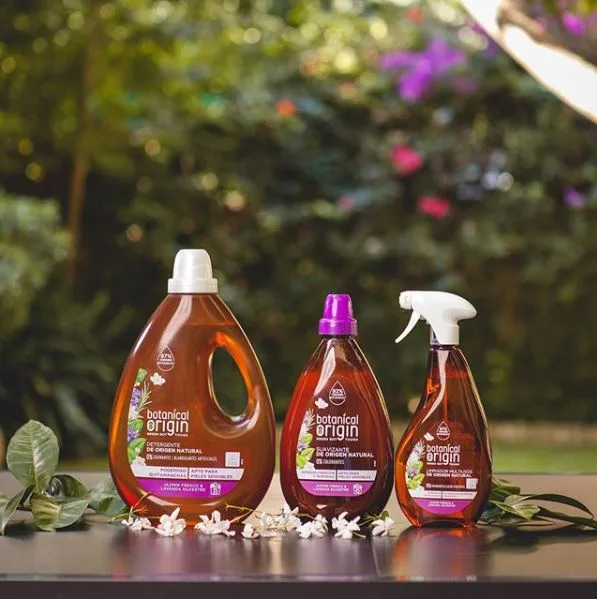Basil is a staple in many home gardens, valued for its easy cultivation, low maintenance, and its essential role in a variety of Asian and Italian dishes. This herb ticks all the boxes for a perfect home garden plant. However, as basil plants begin to flower, the leaves are soon joined by basil blossoms.
If you’re wondering, “Should you allow basil plants to flower?” the answer is not straightforward. While it may seem like a natural progression for a blossoming plant, allowing basil to flower can actually be detrimental. The development of flowers diverts resources away from the leaves, which are the most flavorful part of the plant. When basil begins to flower, the plant’s energy is focused on producing seeds, resulting in leaves that are less aromatic and flavorful.
In this article, we’ll focus on the basil plant, its leaves and flowers, and what to do when the flowers of basil begin to overpower the plant. Fellow home gardeners, let’s learn everything about this wonderful plant and all of its parts.
What Are Basil Flowers?

Basil flowers are small, delicate blooms that appear on basil plants, usually white or purple in color. They grow in clusters at the top of the plant’s stems and can range from a few millimeters to a centimeter in size. Common types of basil, such as sweet basil, Thai basil, and holy basil (tulsi), have distinct flowering traits but share similar floral structures.
The Basil Blooming Cycle
The basil plant life cycle includes a vegetative stage followed by a flowering stage. Basil starts flowering when it reaches maturity, which can be influenced by environmental factors like temperature, sunlight, and plant age. Flowering is a natural part of the plant’s reproductive process, signaling the end of the vegetative growth phase.
Benefits and Uses of Basil Flowers
Basil herb flowers are perfectly edible, but there’s so much to them than their taste! Here are all the ways in which they can be used.
- Culinary Uses: Basil flowers add a unique flavor to dishes, often milder and slightly sweeter than the leaves. They can be used to garnish salads, soups, and desserts, or infused in oils and vinegars.
- Medicinal Uses: Basil flowers, like the leaves, contain essential oils and compounds with potential health benefits. Traditionally, tulsi flowers (holy basil) are used in herbal medicine for their anti-inflammatory, antimicrobial, and stress-relieving properties. Infusions and teas made from basil flowers can be soothing and beneficial for overall wellness.
The medicinal uses of tulsi flowers include:
- Anti-Inflammatory Properties: Reducing inflammation and providing relief from various ailments.
- Antimicrobial Benefits: Helping to combat infections and promote overall health.
- Stress Relief: Offering calming effects through teas and infusions, which can help reduce stress and anxiety.
Aesthetic and Ecological Benefits

Basil flowering can add ornamental value to gardens with their delicate and colorful blooms. They attract pollinators such as bees and butterflies, which help in pollination and contribute to a healthy garden ecosystem. The presence of basil flowering can enhance biodiversity and support local wildlife.
By understanding these benefits and uses, you can make the most of flowers of basil in your culinary, medicinal, and gardening endeavors.
Pros and Cons of Basil Flowering
| Pros | Cons |
| Enhances garden beauty | Reduced leaf production |
| Draws pollinators like bees and butterflies | Leaves become more bitter. |
| Provides seeds for future planting | Requires regular pinching of flowers. |
| Supports garden biodiversity | Plants look less lush |
The Impact of Basil Flowers on Basil Leaves

Basil flowers blossoming comes at a cost to basil leaves. When basil plants begin to flower, they naturally shift their energy from leaf production to seed formation. This biological process can have several impacts on the quality and quantity of basil leaves:
- Reduction in Leaf Quantity: As the basil plant diverts resources to support flower and seed development, the growth of new leaves slows down significantly. This results in a noticeable decrease in the overall quantity of leaves produced. Gardeners who rely on a steady supply of basil leaves for cooking or commercial purposes may find this reduction problematic.
- Change in Leaf Flavor: The chemical composition of basil leaves changes once the plant starts to flower. The leaves may become more bitter and less aromatic, which can affect the taste and quality of culinary dishes. The bitterness is due to the increased production of compounds that are more beneficial for seed development than for flavor enhancement.
Understanding these impacts and balancing your gardening goals will help you make informed decisions about whether to allow your basil plants to flower. Whether you prioritize leaf production or enjoy the beauty and benefits of basil flowers, proper management can help you achieve a thriving garden.
How To Manage Basil Herb Flowers
Basil blossoming isn’t as easy as it sounds. Most gardeners have the instinct of pinching off basil flowers upon sprouting. This makes management of basil flowers harder. To achieve the perfect balance between leaf production and the enjoyment of beautiful blooms, you need to care for the whole plant. Here, we have some effective tips so keep reading for techniques to manage basil blossoming.
Pinching Off Basil Flowers

To prevent basil from flowering and promote continuous leaf growth, you can pinch off the flower buds as they appear. This process involves using your fingers or pruning shears to remove the buds. Regularly pinching off basil flowers encourages the plant to focus on producing leaves rather than seeds. Here’s how to do it effectively:
Identify Flower Buds Early: Keep an eye on your basil plants for the first signs of flowering. The buds will appear at the top of the stems and can be easily distinguished from the leaves.
Pinch or Prune Gently: Using your fingers or a pair of clean, sharp pruning shears, pinch off the flower buds just above the next set of leaves. This will prevent the plant from putting energy into seed production.
Regular Maintenance: Should you allow basil plants to bloom, check them weekly and continue pinching off basil flowers and any new flower buds. This routine maintenance will keep your plants focused on leaf production and ensure a steady supply of fresh basil leaves.
Balancing Basil Plant Flowering and Leaf Growth

If you want to enjoy both the leaves and tulsi flowers on your basil plant, consider allowing a few plants to flower while pinching off the buds on others. This way, you can harvest fresh basil leaves while also enjoying the blooms. Here are some tips for balancing flowering and leaf growth:
Designate Specific Plants: Decide which plant you should let basil flower, and which ones you will keep pinched. This can be based on your garden layout and your need for both leaves and flowers on your basil plant.
Strategic Pinching: On the plants you want to flower, you can still pinch off some of the buds to encourage bushier growth and more blooms. This selective pinching will help you manage the plant’s overall shape and health.
Optimal Growing Conditions: To extend the leaf harvest period, ensure your basil plant flowering receive adequate water, nutrients, and sunlight. Proper care will support both leaf and flower production, allowing you to enjoy the best of both worlds.
Rotate Plants: If you have a large number of basil plant flowering, consider rotating which ones you allow to flower each season. This way, you can maintain a continuous supply of leaves while also enjoying the visual and ecological benefits of flowering basil plants.
By following these techniques, you can effectively manage your plants, should you allow basil plants to bloom at home, ensuring a bountiful harvest of leaves while also appreciating the delicate beauty of basil blossoming.
Basil Flowers 101: Gardening Tips

Scientific research supports the benefits of regular harvesting and pinching in extending the productive life of basil plants. Studies also tell us that consistent watering and balanced fertilization can delay flowering and enhance leaf yield. So, consistency is key!
You’ll need to ensure the right growth of your plants, should you let basil flower. Here are some expert tips:
Consistent Watering: Basil plants thrive with consistent moisture. Water them regularly, ensuring the soil stays damp but not waterlogged.
Balanced Fertilization: Use a balanced fertilizer to provide essential nutrients. This helps the plant grow robustly and delay the flowering process.
Adequate Sunlight: Ensure your basil plants receive plenty of sunlight, ideally six to eight hours a day. This promotes healthy growth and maximizes leaf production.
Proper Spacing: Plant basil with enough space between each plant to allow for air circulation and prevent fungal diseases.
Regular Pruning: Regularly pinch off the tops of the basil plants to encourage bushier growth and delay flowering. This will keep your plants producing flavorful leaves longer.
By following these expert tips and scientific insights, you can maintain a thriving basil crop and enjoy the delicious benefits of this versatile herb.
Summing Up!
We love basil and much as we love its flowers. They’re a natural and beautiful part of the basil plant’s life cycle. Whether you want to allow them to bloom or not depends on your gardening preferences. If you value continuous leaf production, regular pinching off of flowers is recommended. However, allowing some plants to flower can provide aesthetic and ecological benefits. Experiment with different approaches to find what works best for your garden!
Discover a range of eco-friendly products that can help you create a thriving, sustainable garden. Check out Ecowiser’s sustainable products and start your eco-friendly journey today.
Frequently Asked Questions
Can you eat basil flowers?
Yes, basil flowers are edible and can be used in various culinary applications. They add a mild, slightly sweet flavor to dishes, making them a great garnish for salads, soups, and desserts. Additionally, basil flowers can be used to infuse oils, vinegars, and even beverages, offering a unique twist to your culinary creations.
How do you stop basil from flowering?
To prevent basil from flowering, regularly pinch off the flower buds as soon as they appear. This encourages the plant to focus its energy on leaf production rather than seed formation. Use your fingers or pruning shears to remove the buds, and make sure to check your basil plants weekly to keep them from blossoming.
What are the benefits of basil flowers in herbal medicine?
Basil blossoming, especially those from tulsi (holy basil), are valued in herbal medicine for their numerous health benefits. They possess anti-inflammatory, antimicrobial, and stress-relieving properties. Traditional uses include making teas and infusions to support respiratory health, improve digestion, and provide relief from stress and anxiety, enhancing overall well-being.
Should you let tulsi (holy basil) flower?
Allowing tulsi (holy basil) to flower can attract pollinators like bees and butterflies, which are beneficial for your garden. The flowers also enhance the plant’s medicinal properties. However, letting tulsi flower may reduce leaf production, so consider your primary goal—whether it is to maximize leaf harvest or to enjoy the ecological and medicinal benefits of the flowers.









